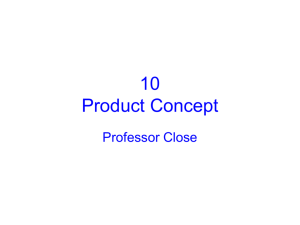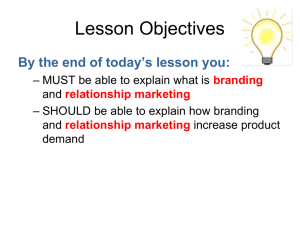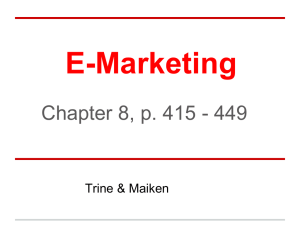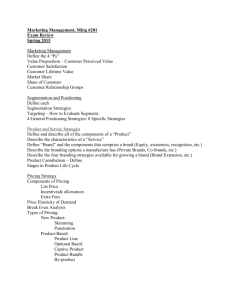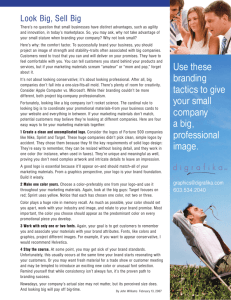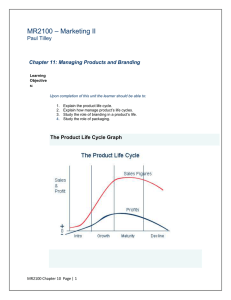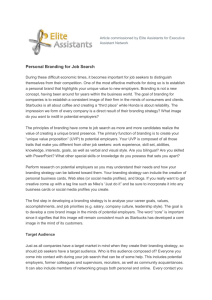Chapter 10 Quiz Group 11 1. Which one of these is NOT part of the
advertisement
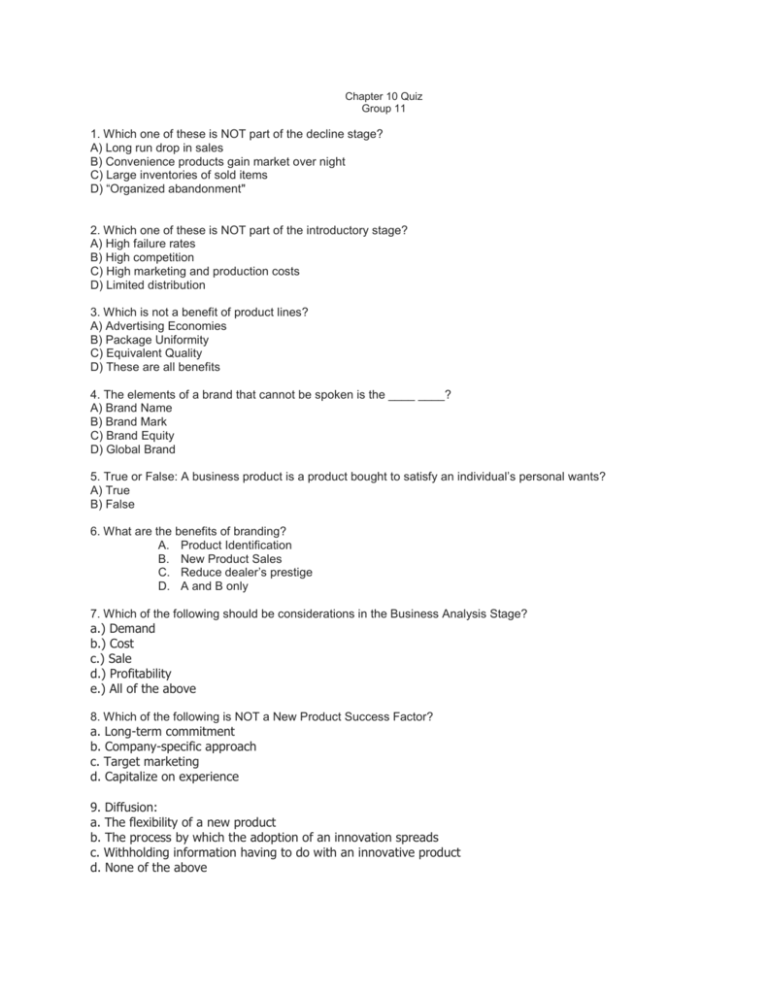
Chapter 10 Quiz Group 11 1. Which one of these is NOT part of the decline stage? A) Long run drop in sales B) Convenience products gain market over night C) Large inventories of sold items D) “Organized abandonment" 2. Which one of these is NOT part of the introductory stage? A) High failure rates B) High competition C) High marketing and production costs D) Limited distribution 3. Which is not a benefit of product lines? A) Advertising Economies B) Package Uniformity C) Equivalent Quality D) These are all benefits 4. The elements of a brand that cannot be spoken is the ____ ____? A) Brand Name B) Brand Mark C) Brand Equity D) Global Brand 5. True or False: A business product is a product bought to satisfy an individual’s personal wants? A) True B) False 6. What are the benefits of branding? A. Product Identification B. New Product Sales C. Reduce dealer’s prestige D. A and B only 7. Which of the following should be considerations in the Business Analysis Stage? a.) Demand b.) Cost c.) Sale d.) Profitability e.) All of the above 8. Which of the following is NOT a New Product Success Factor? a. Long-term commitment b. Company-specific approach c. Target marketing d. Capitalize on experience 9. Diffusion: a. The flexibility of a new product b. The process by which the adoption of an innovation spreads c. Withholding information having to do with an innovative product d. None of the above 10. Issues in global packaging include all of the following except: A labeling B climate considerations C aesthetics D industry 11. Which type of labeling focuses on promotional theme? A informational B persuasive C secondary D primary 12. Which of then following is NOT considered a global issue in packaging? A. Labeling B. Aesthetics C. Storage D. Climate Considerations 13. Which of the following is NOT a type of Co-Branding? A. Ingredient Branding B. Functional Branding C. Cooperative Branding D. Complementary Branding 14. Which of the following is an advantage of Manufacturers' Brands? A. Lower consumer ads by manufacturers B. Deteriorate dealers prestige C. Slower delivery D. Attract new customers 15.What is a type of co-branding? A. Ingredient Branding B. Cooperative Branding C. Complementary Branding D. All of the above 16. Package Labeling takes which form? A. Persuasive B. Informational C. Both A & B D. None of the above 17.What is Cobranding? A. Identifies the brand of a part that makes up the product B. Occurs when two brands receive equal treatment C. Placing two or more brand names on a product or its package D. Refers to products advertised or marketed together to suggest usage 18. Which of the following are not product warranties? A. Express Warranty B. Silent Warranty C. Implied Warranty D. New Warranty E. Both B and D 19. When can price, distribution, and promotion strategies be determined? A. When the firm has a product to sell B. During the brainstorming phase C. Whenever the firm feels like it D. When looking for investors 20. Which of these is NOT a type of consumer product? A. Convenience Products B. Shopping Products C. Shipping Products D. Unsought Products Answers 1. 2. 3. 4. 5. 6. 7. 8. 9. 10. 11. 12. 13. 14. 15. 16. 17. 18. 19. 20. B B D B B D E C B D B C B D D C C E A C Brittany Bennatt, Kyle Nylec, Jennifer Dockweiler, Chad Crawford, William Thompson, Lindsey Mearns, Katharine Simmons, Maggie Dickson, Lauren Perkins, Madeline Phillips, Aaron Ward




